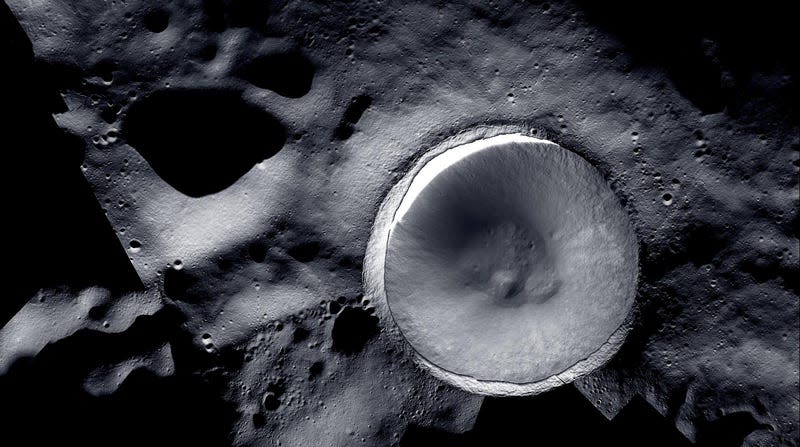Orbiting Lunar Cameras Join Forces to Weave Beautiful Mosaic of Shadowed Moon Crater

A new mosaic of the Shackleton Crater on the Moon’s south pole.
NASA released a new mosaic of an impact crater that perpetually lies in the shadows of the lunar south pole. By combining the light sensitivity of NASA’s ShadowCam with the Lunar Reconnaissance Orbiter’s ability to view shadowed regions, scientists put together a rare image of the Shackleton Crater as it appears in unprecedented detail.
LROC (Lunar Reconnaissance Orbiter Camera) has been orbiting the Moon since 2009, while ShadowCam, a NASA instrument on board a KARI (Korea Aerospace Research Institute) spacecraft called Danuri, launched in August 2022.
Read more
Dealership Drops, Smashes Brand New Corvette Z06 Before Delivery
There’s Apparently A Two-Hour Section Of Baldur’s Gate 3 No One’s Found Yet
13 More Things We Just Learned About Final Fantasy VII Rebirth
Three points on the crater’s rim remain collectively sunlit for more than 90% of the year due to the Moon being slightly tilted on its axis at 1.5 degrees compared to Earth at 23.5 degrees, according to NASA. Sunlight never reaches the floor of the crater, however, rendering it permanently shadowed.
Previous evidence has suggested that permanently shadowed regions on the Moon may hold reservoirs of water ice, which could be used as a valuable resource for future crewed missions that want to land on the lunar surface.
“Future Artemis missions to the Moon’s South Pole may use these highly illuminated regions to make use of solar energy and support a base camp with trips into shadowed regions to determine what the low-temperature crater holds,” NASA wrote. “The South Pole also provides near constant communication with Earth.”
For more spaceflight in your life, follow us on X (formerly Twitter) and bookmark Gizmodo’s dedicated Spaceflight page.
More from Gizmodo
Britney Spears Reportedly Won’t Be Allowed to Talk About Her Memoir to the Press
Judge Cancels Psych Eval for Mom in Nebraska Abortion Case Due to ‘Lack of Funding’
Hakeem Olajuwon charges $50K to teach what cannot be taught — good for him
Sign up for Gizmodo's Newsletter. For the latest news, Facebook, Twitter and Instagram.

